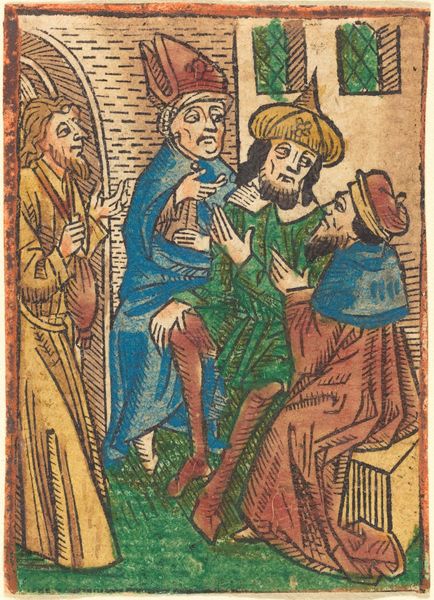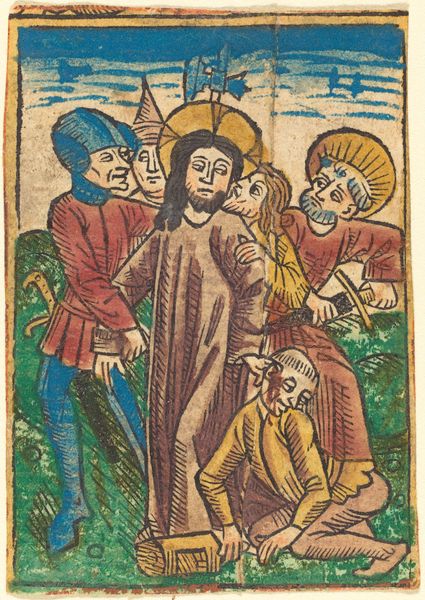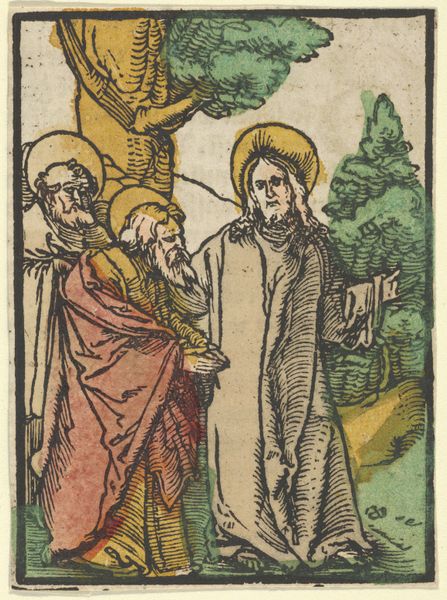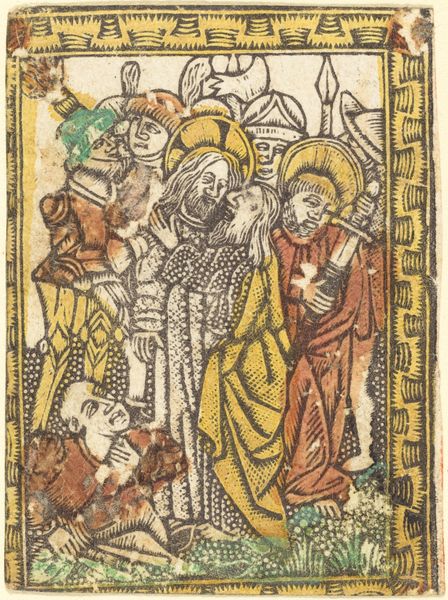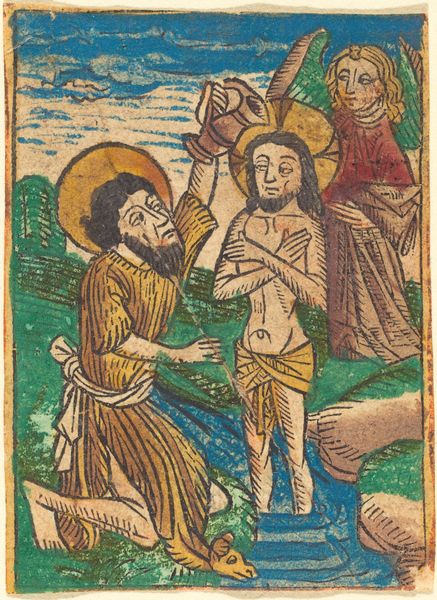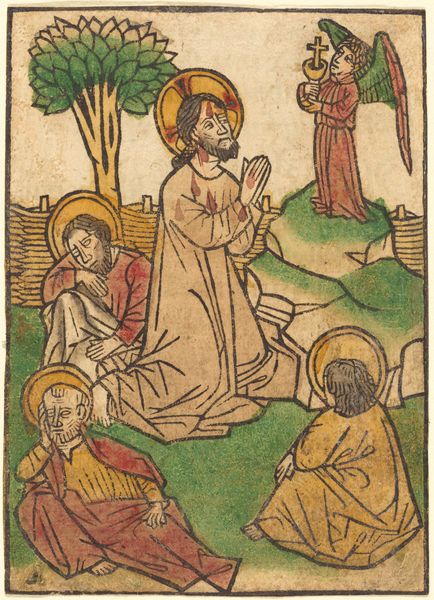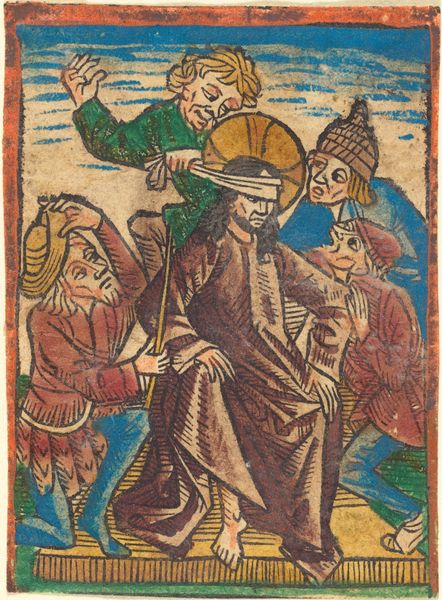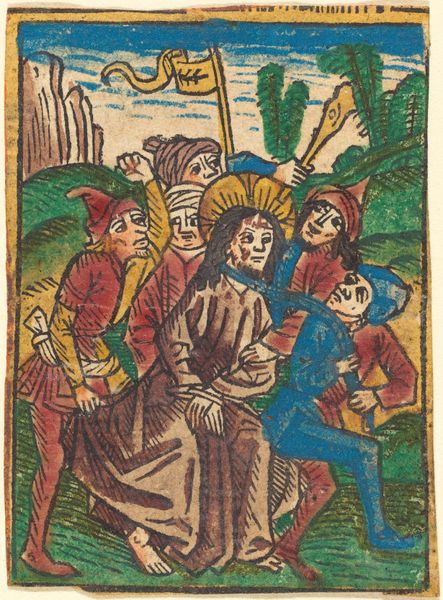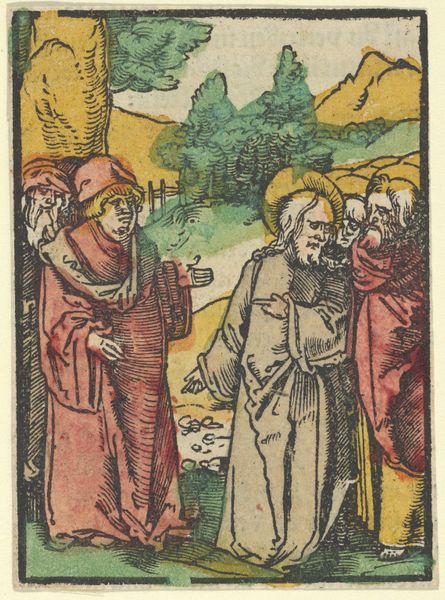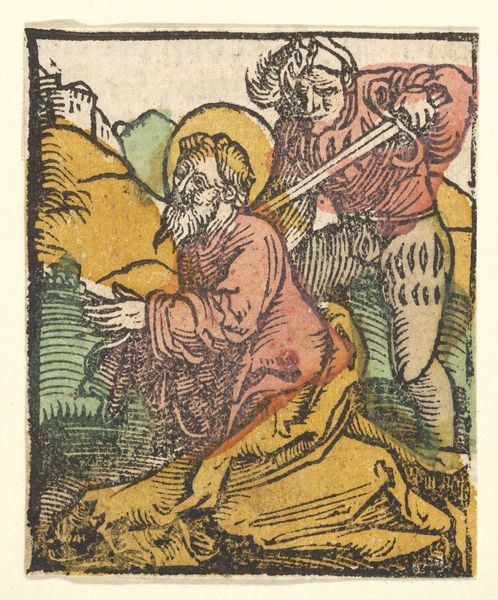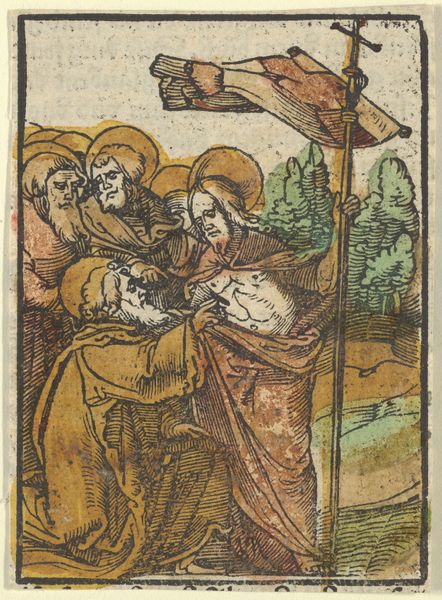
print, woodcut
#
narrative-art
# print
#
figuration
#
woodcut
#
history-painting
#
northern-renaissance
Copyright: National Gallery of Art: CC0 1.0
Curator: This woodcut, dating from around 1490, is entitled "The Agony in the Garden." Editor: It immediately strikes me as both stark and incredibly delicate given its medium. There’s a fragility that contradicts the power of the scene it depicts. Curator: Indeed. What you're sensing arises from the contrast inherent in the printmaking process. A relief technique where the artist carves away from the block, leaving the image raised. It’s a testament to the artist's skill that they can evoke such a somber, devotional scene. The strong, graphic lines give it that starkness, but the relatively small scale and evident hand-coloring lends a delicate, almost intimate quality. Editor: Observing the texture and the evidence of hand-coloring gives a real sense of connection to the original craftsperson and the materials involved. The wood grain itself seems to play a role in the landscape, adding texture and depth that's integral to its meaning. Consider the economics and circulation: was this accessible? Mass produced for everyday people? What was the societal relationship to the content it portrays? Curator: The formal composition leads the eye. Christ kneels at the center, his gesture directing us upward towards the symbolic chalice, a representation of his impending suffering. The disciples are arranged around him in postures suggesting sorrowful sleepiness, highlighting his isolation. The narrative, through figuration and symbol, delivers a rather potent, and perhaps personal, interpretation of a biblical event. Editor: Considering the cultural context in which it was created, understanding who carved it, how it circulated, and who consumed this piece provides crucial layers to our comprehension. A reminder that these materials carried political and cultural weight. Curator: Precisely. It bridges artistic form with its broader historical and societal impact, offering viewers access to the dialogue between the artist and their time. Editor: To think about this artwork, as a kind of record of both intimate spiritual encounter and societal circulation really brings it home.
Comments
No comments
Be the first to comment and join the conversation on the ultimate creative platform.

